Cultural Assets
The Secret Buddha of Kumano Taisha Shrine
Kumano Taisha Shrine’s Amida Nyorai. The secret Buddha enshrined in the main hall was once thought to have been an avatar of Kumano and appeared as the great god of Kumano. Amida Nyorai saves people from suffering and guides them to paradise. In ancient times, “love” was written as “sorrow”. This sorrow is of being alone and feeling sad thinking of the one you love. Love is meeting the one you adore and wanting to be with them forever. This “love” involves happiness and sadness, and thoughts that can tear your heart apart. The god of Kumano Taisha shrine connects people. The compassionate Amida Nyorai at times saves us from the suffering of this sorrow.
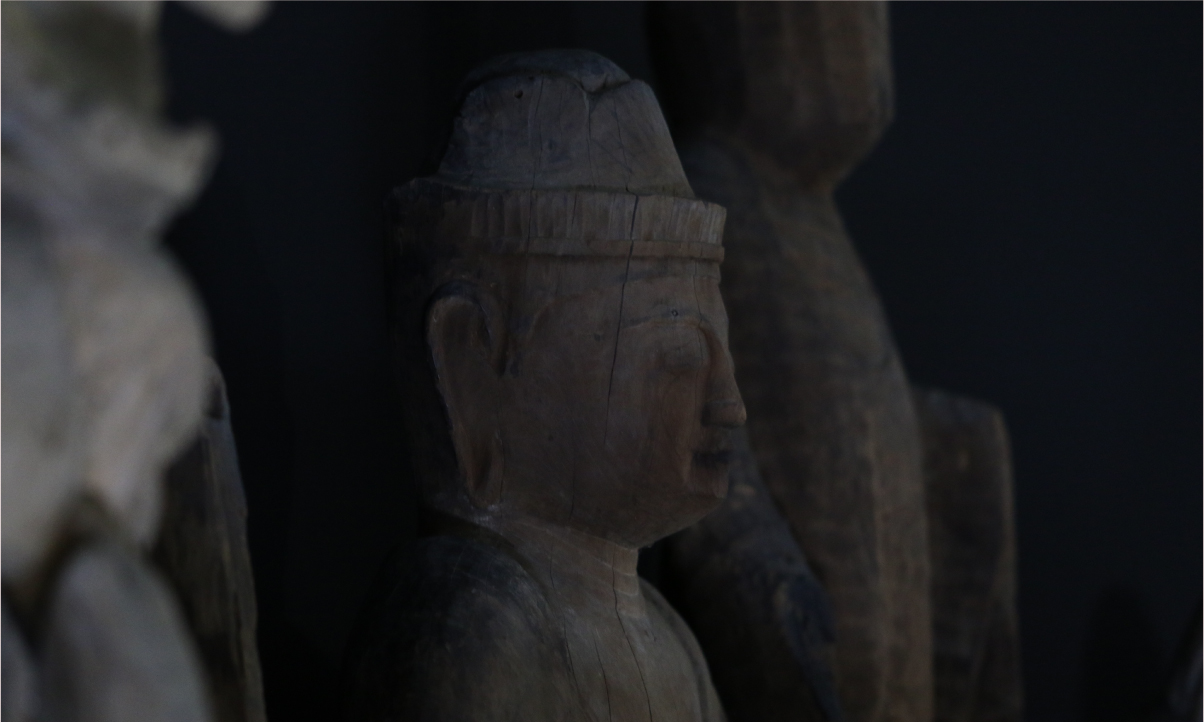
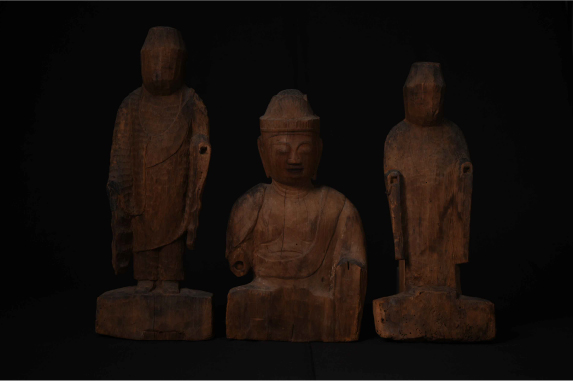
Wooden Bodhisattva and Attendants (Amida Kannon Yakushi) Heian Period
Enshrined at Kumano Taisha Shrine are the Buddhist Triad of Amida Nyorai (Main Hall), Kannon (Secondary Hall) and Yakushi (Tertiary Hall). Amidanyorai is the Buddha who saves the masses in the end times (people like us) and guides them to paradise. Yakushinyorai is the Buddha who heals sickness and guides them to a comfortable life. In the Three Kumano Shrines of Kishu, Amidanyorai is enshrined in Hongu-yaisha Shrine and Yakushinyorai is enshrined in Hayatama Shrine. While the Thousand –Armed Kannon is enshrined at Nachi Taisha Shrine, Kannon is enshrined here in the Secondary Hall, It’s believed that Kannon is enshrined here because faith in Kannon is strong in the Tohoku area. Kannon is the Buddha who saves people not saved by Amidanyorai.
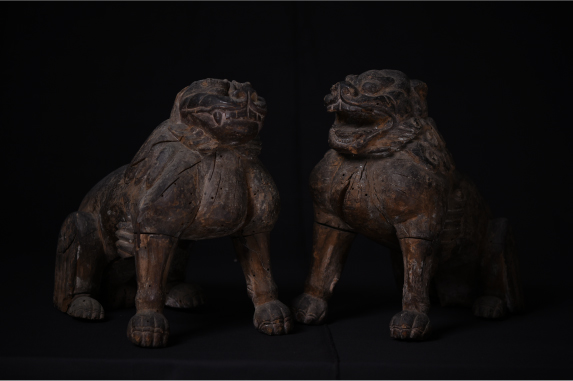
Guardian Lion Muromachi Period
This is placed in the same way as the guardian dogs on either side in front of the god. On the right the lion’s mouth is opened to make the sound “ah” and on the left the lips are pressed to make the sound “un”. It’s said that this shows how the world begins with “ah”(alpha) and ends with “un”(omega). This was the beginning of the deep breathing exercise “ah-un”. In the case of this shrine, they are placed in front of the main hall. They have a rich expression, and the bodies which indicate weight and their rounded backs are said to be indicative of a very old style.
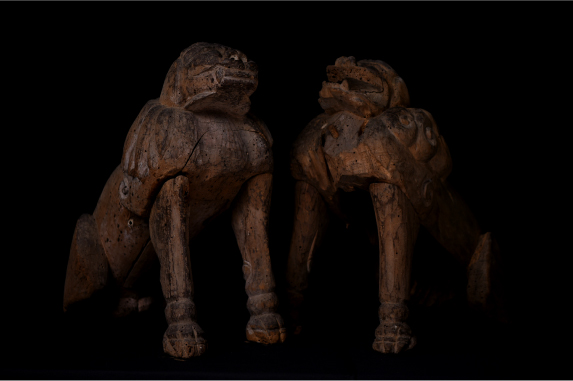
Guardian Dogs Muromachi Period
Guardian dogs are usually placed in front of the gods on the left and right for protection. In this shrine, while it’s related there were once two of them, until 1868 there was one each placed at the second and third hall. You can see how carefully carved the wood of the claws on the front feet are, almost like a photograph. It’s said that while they date from the Muromachi Period, the style is of the Kamakura period.
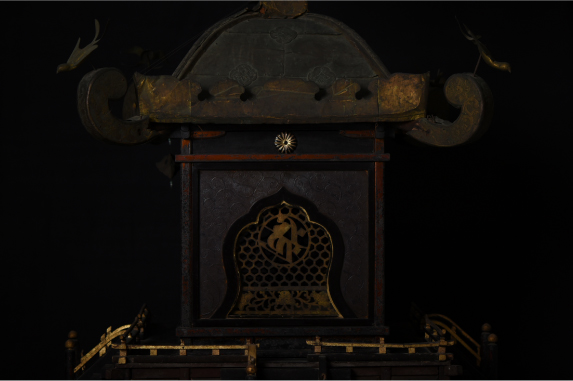
Zenkoji Buddhist Style Portable Shrine Muromachi Period
The Zenkoji Nyorai has been placed at this temple since it was declared a Northeast Shrine by the Uesugi Clan. On that occasion, the portable shrine was thought to have been used to relocate the Zenkoji Nyorai. Afterwards, Zenkoji Nyorai was relocated to Hoonji Temple in Yonezawa. Since Hoonji Temple does not display the Zenkoji Nyorai as it is a secret Buddha, the only place where an ancient cultural property related to Zenkoji is displayed is at this shrine.
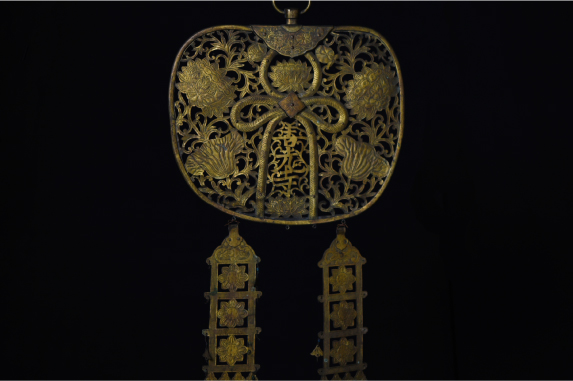
Zenkoji Temple Buddhist Ritual Decoration (Keman) Muromachi Period
Keman are a type of decoration used to adorn a Buddhist temple. This has a lotus pattern latticework and in the center is the crest of Zenkoji temple. From the shape of the pattern on its surface it’s thought to be from the Muromachi period.
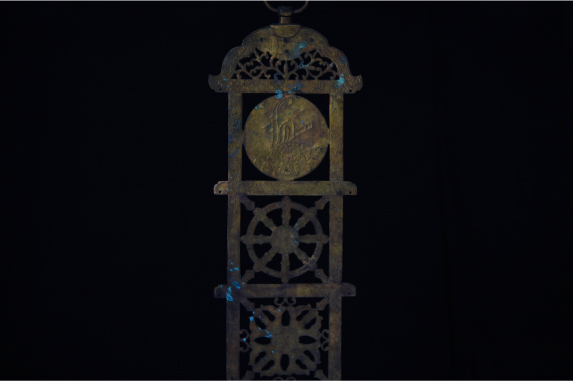
3 Part Gilt Banner Muromachi Period
This banner eliminates evil presences and brings fortune and long life, and proudly decorates the Buddhist temple as an adornment. The upper semicircle is the Banto (Banner Head), the next rectangular part is the Banshin (Banner Body), and the four streamers are called Bansoku (Banner Legs). It called the 3 Part Banner because it is composed of these three parts. It is inscribed with Sanskrit on the upper part Buddhist teaching on the second part, and katsumamon which reduce worldly desires on the third part. The four streamers of the Bansoku are held in a flower shape, which function as an ornament.
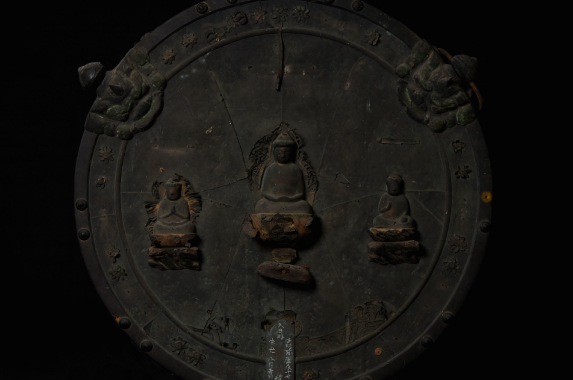
Round Plaque with Image of the Buddha (Votive Plaque) August, 1410 Muromachi Period
In the age of fusion between Shintoism and Buddhism, it was thought that gods were appearances of the Buddha. Because of this, it was popular to venerate round plaques with the image of the Buddha as votive plaques of the gods. In the center of the plaque are written characters meaning the benefactor wishes to become one with the Buddha and also relates to the Kumano mountain residence of ancient times. Also there is the year and month August, 1410 AD, an auspicious day of revelation. There are 11 votive plaques here at this shrine dating from the Muromachi to the Edo period, but this plaque from 1410 is the oldest.
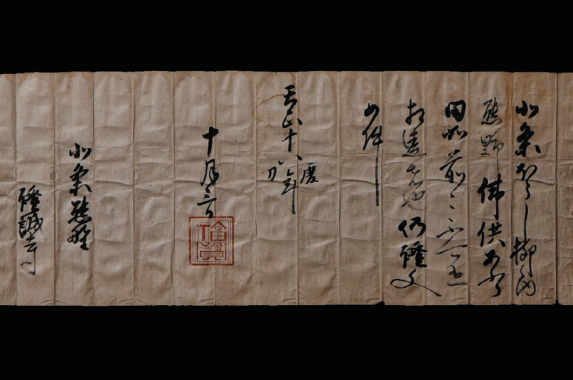
Date Masamune Andojo Document Azuchi-Momoyama Period October 3rd, 1590
A document from the feudal lord Date Masamune guaranteeing rice fields to Kumano Mountain Shojo Temple. An andojo was a document from a lord giving or guaranteeing property rights to their retainers. We know it is from the then lord of this region, Date Masamune, from the vermilion seal on the document. The recipient was “Hojo Kumano Shojo Temple”. Hojo was the name given to the area of this shrine, comprising almost the same area as present day Nanyo City. At that time, this shrine was a temple called “Kumano Mountain Shojo Temple”.
